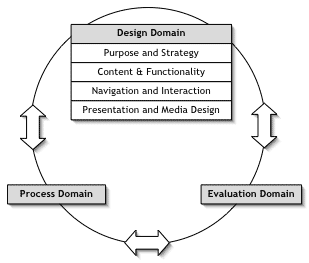
I gave a lecture today. Titled 'cheap'n'easy usability' [large ppd], it's one I've given before and covers discount aka guerilla usability testing.
It was great fun. I love talking about this stuff.
The students - it was at Westminster University - must have ancestors from every continent bar Antarctica, and I couldn't help but think what an enormous advantage that is / will be for London and the UK (something double underlined in a new New York magazine feature).
Anyway, several of the questions related to a statement I made about picking testers, which is 'don't fret'.
Yes, don't pick five geeks (or five attractive women)! But - beyond some variety - to get your 80% (most obvious) errors you don't need a demographically accurate sample.
The key determinant of success is basic skill level and ability to use the interface.
The questioners wondered about culture and how that impacts. They didn't quite trust my statement.
There was a bit more in Jakob Nielsen in China, which I didn't post before, which explains this a bit better:
We're testing both Chinese sites and Western sites, because we need to generate guidelines for theThe key bit here is 'build a fully localized site', because there are cultural differences when it comes to things like colour, icons and lots of other elements down to simple things like how Arabic websites go right/left or how Brazilian sites like more colour in general.
audience at our upcoming conferences in the U.S. and U.K.. It's actually more important to most of our clients how Chinese users use foreign sites than how they use Chinese sites, since most companies can't afford to build a fully localized site.
There are certainly interesting differences between Asian users and the American, European, and Australian users we test in most of our studies. Details to come at the presentations later in the year once we have analyzed the data fully. But the most interesting finding from our current tests is "the dog that didn't bark" to refer to Sherlock Holmes.
For most of the things we tested, there was NO DIFFERENCE in the usability guidelines between Asia and other parts of the world. This is similar to findings in our studies in Japan and Korea.
| Color | China | Japan | Egypt | France | United States |
| Red | Happiness | Anger Danger | Death | Aristocracy | Danger Stop |
| Blue | Heavens Clouds | Villainy | Virtue Faith Truth | Freedom Peace | Masculine |
| Green | Ming Dynasty Heavens | Future Youth Energy | Fertility Strength | Criminality | Safety Go |
| Yellow | Birth Wealth Power | Grace Nobility | Happiness Prosperity | Temporary | Cowardice Temporary |
| White | Death Purity | Death | Joy | Neutrality | Purity |
All interfaces will have small cultural differences - ATMs in Sweden have large buttons to cope with mittens.
But it's the actual interfaces and the way people use them - what elements you pick and where you put them, what choices make sites usable or less usable - which doesn't change much.
There are commonalities and there are bodies trying to create international usability standards, including for web interfaces. This isn't published but the model below shows the wider reference points for considering web interfaces.

The standard will detail guidance in four main areas:
- Purpose and strategy. What is the purpose of the site and how is this made clear to its users?
- Content and functionality. What is the site’s conceptual model? How is content organised and how should the site deal with issues such as privacy and personalisation?
- Navigation and interaction. How should the content be organised so that users can navigate the site easily? How will users search the content of the site?
- Presentation and media design. How should individual pages be designed so that people can make use of the information? How should multimedia be used?
There's also the point that the technology itself can reflect one culture's norm - most obvious is the 'boysey' nature of some gadget and game design. Plus there are gender differences in the way people use the web.
But, my general feeling, though, is that - well - fretting on this can obscure the very discount basis of the testing — specific design issues need specific testing to get right (or as near as dammit/budget allows), just as with accessibility.
Discount testing is simply about getting you out of the woods, so to speak.


 @PubSecBloggers
@PubSecBloggers













0 comments:
Post a Comment